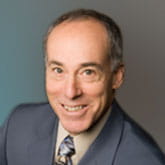Dentistry has a long and storied history. In Pakistan, evidence was found of a flint crafted drill to treat tooth decay dating back 7,000 years. Today’s challenge is to understand how and why this ancient skill separated from medicine, and what can be done to fill that “cavity”. This is a very timely topic given October is National Dental Hygiene Month.
It Started in the Barber Shop
In the Middle Ages, barber surgeons did tooth extractions in addition to other surgical procedures. As the barber surgeons evolved into the surgical half of what became the practice of medicine, some physicians actually specialized in dentistry. In the 19th century, the first dentistry training programs were created. The Baltimore College of Dental Surgery, established in 1840, was the first dental school in the world, and Harvard established the first doctor of dentistry program in 1867. These programs laid the foundation for today’s divide between dentistry and medicine.
Health Insurance Cemented the Divide
Unfortunately, in the 20th century that divide was exacerbated by the move to health insurance that excluded dental benefits. As employer-based health insurance took hold during and following WWII, dental coverage was left behind. Interestingly, WWII veteran dentist Max Schoen was called before the House Unamerican Activities Committee in 1951 for trying to make dental care universally available. Three years later, he worked with the West Coast Longshoremen and Warehousemen’s Union to form what would become Delta Dental, the first and largest dental benefits company in the country.
The Medicare Exclusion had Lasting Impact
Despite the work of Dr. Schoen and others, when Medicare was created in the 1960s, dental benefits were a specific exclusion. In fact, commercial health insurers have generally excluded dental benefits as well, arguing that because of the deferability of most dental services, they don’t lend themselves to an insurance product. As an exception to this rule, when Medicaid was established, dental benefits for children were included and states were left to decide what, if any dental benefits to provide for adults on Medicaid. Currently, two thirds of states offer only limited, emergency, or no dental benefits for adults.
Evidence Supports Integration
All of this history flies in the face of the evolving science over the past century which clearly demonstrates that, like all the other organ systems in the body, what happens in the teeth and gums is impacted by and has an impact on other systems. At the diagnostic level, many acute and chronic conditions present with signs and symptoms in the mouth that could and should be diagnosed by a dentist as well as a physician. At the causal level, we’ve long known that tooth decay and periodontal disease have infectious etiologies. Furthermore, there is increasing evidence that these two problems in the mouth and the inflammation associated with them are correlated with, if not causal of such systemic problems as diabetes and coronary artery disease.
The Cavity is Costing Us
Beyond the clinical issues, there is the problem of medical services being driven by poor dentition. A 2010 CDC report found that non-traumatic dental problems account for 1.5% of all emergency department use or about two million visits annually. At the same time, a study in Oregon revealed this to be a healthcare disparities issue, with poor young minorities disproportionately represented. Furthermore, the study found that health literacy was a big part of the problem, as many patients reported they were unaware that they might have dental coverage through Medicaid.
As we look for ways to overcome the divide between dentistry and medicine, federally qualified health centers (FQHCs) appear to be at the tip of the spear. About 75% of FQHCs have dental services available on site. In our September 22 blog we noted that the Cambridge Health Alliance, an urban FQHC, established a program to train dental residents in primary care screening. This is a noteworthy step in building bridges between medicine and dentistry, but there is much more to be done to permanently fill this “cavity.”





